
















Please login here to save this document to a list.
If you don't have an account, you can register for free here.
Complete Capital Optimization Guide (PowerPoint PPTX Slide Deck)
PowerPoint (PPTX) + Excel (XLS) 126 Slides
BENEFITS OF THIS POWERPOINT DOCUMENT
- Provide a framework for developing a Capital Scrubbing and Optimization Strategy
COST REDUCTION PPT DESCRIPTION
It's no secret that cost overruns and delays run rampant in large capital projects. But a lack of internal discipline, in both the proposal and management stages of a project, further raises costs—both of individual projects and entire portfolios of investment. According to McKinsey & Company, the capital expenditure spend category typically receives insufficient management attention or control, causing inefficient capital allocation and poorly prioritized project portfolios.
Effective capital planning decisions can lead to significant competitive advantages. Capital optimization can lower wasted resources on unnecessary projects and lead to improved profitability.
Companies across the world are already looking for methods and techniques to improve their current processes.
There is increasing pressure in companies to reduce costs, through capital optimization initiatives including stay-in-business (SIB) capital spend. It requires that a process is developed to prioritize, select, and successfully execute the necessary SIB projects to support operations in delivering on their business plans.
The design and processes playbook is developed in accordance with the methodology of a top-tier consulting firm in the SIB execution environment and will assist in assessing if capital optimization potential exists.
It covers the following sections:
1. Business Value Proposition
2. Core Business Processes
3. Governance and Performance structures (which includes but is not limited to organization design)
4. Change management
5. Implementation Roadmap
The Capital Optimization Guide delves into the intricacies of optimizing Stay-In-Business (SIB) capital spend, addressing the challenges at the project, portfolio, and organizational levels. It highlights the importance of clear project justification, front-end loading, and comprehensive optimization of individual projects. The guide also emphasizes the need for robust governance and performance management structures, including standardized tools and templates, to ensure efficient gate governance and budgeting processes. The PPT provides a detailed roadmap for creating business value through capital scrubbing, portfolio management, and stage gate implementation, supported by a well-defined organizational structure and roles.
Got a question about the product? Email us at support@flevy.com or ask the author directly by using the "Ask the Author a Question" form. If you cannot view the preview above this document description, go here to view the large preview instead.
Source: Best Practices in Cost Reduction, Capital Structure PowerPoint Slides: Complete Capital Optimization Guide PowerPoint (PPTX) Presentation Slide Deck, Corporate Finance 101
COST REDUCTION PPT SLIDES
CET Training Framework: Skills Development and Coaching
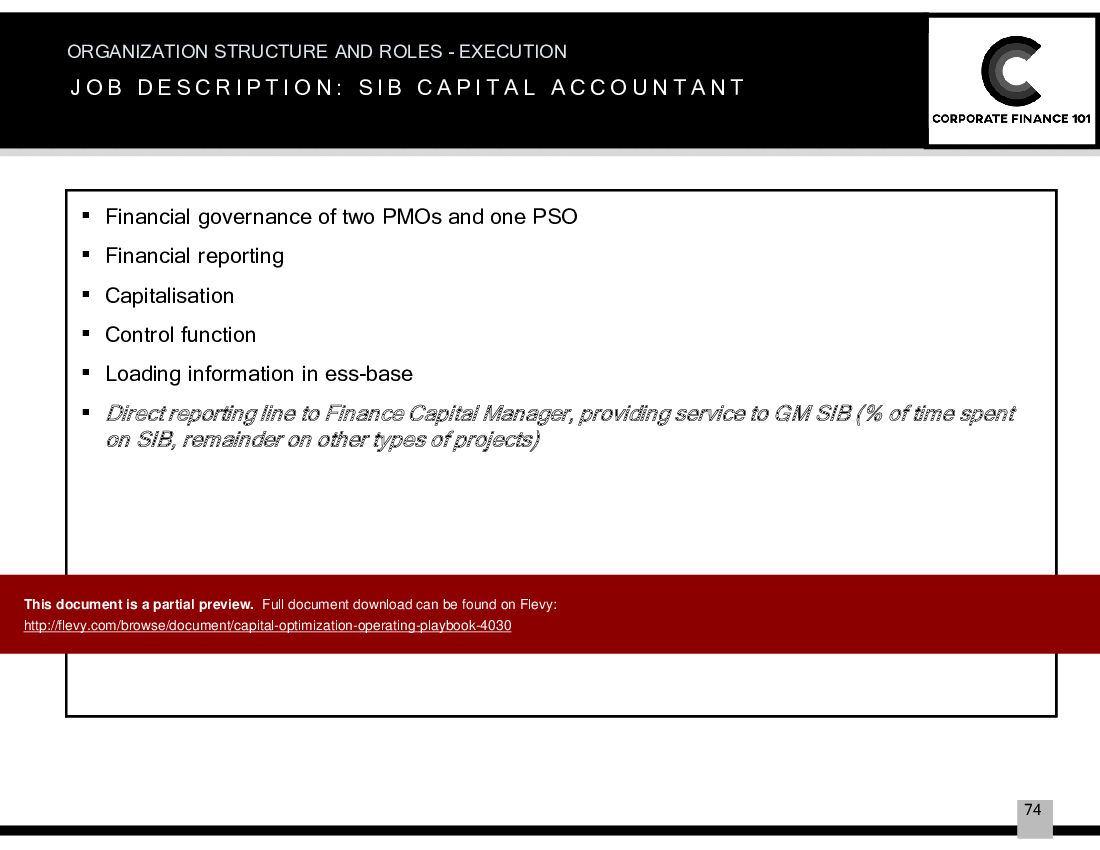
This PPT slide outlines the training framework for CET capabilities, emphasizing the importance of structured learning and ongoing coaching. It identifies the CET leader as the individual responsible for overseeing the training initiatives. The training occurs monthly in a formal setting, complemented by continuous on-the-job coaching. This dual approach is designed to enhance both technical and soft skills among employees.
The expected benefits of this training program are significant. It aims to increase the employee value proposition, which suggests that employees will become more valuable assets to the organization. Additionally, the framework promotes a mindset of continuous improvement within CET, indicating a commitment to evolving skills and capabilities over time.
The training content is divided into 3 main focus areas. The first is formal functional skill training, which includes techniques for scrubbing and optimization, such as valuation and root cause problem-solving. Excel skills are also highlighted, indicating a focus on analytical capabilities essential for effective financial management.
The second area is formal soft skill training, which addresses critical interpersonal skills. Leadership skills, facilitation, communication, and relationship-building are key components, reflecting the need for employees to navigate complex team dynamics and stakeholder interactions effectively.
Lastly, on-the-job coaching is emphasized as a vital component of the training process. This includes highlighting individual strengths and areas for improvement, along with providing regular feedback. This approach ensures that learning is not only theoretical, but also practical, facilitating real-time application of skills in the workplace. Overall, the slide presents a comprehensive training strategy aimed at developing well-rounded professionals within the CET framework.
Project Segmentation by Complexity and Value
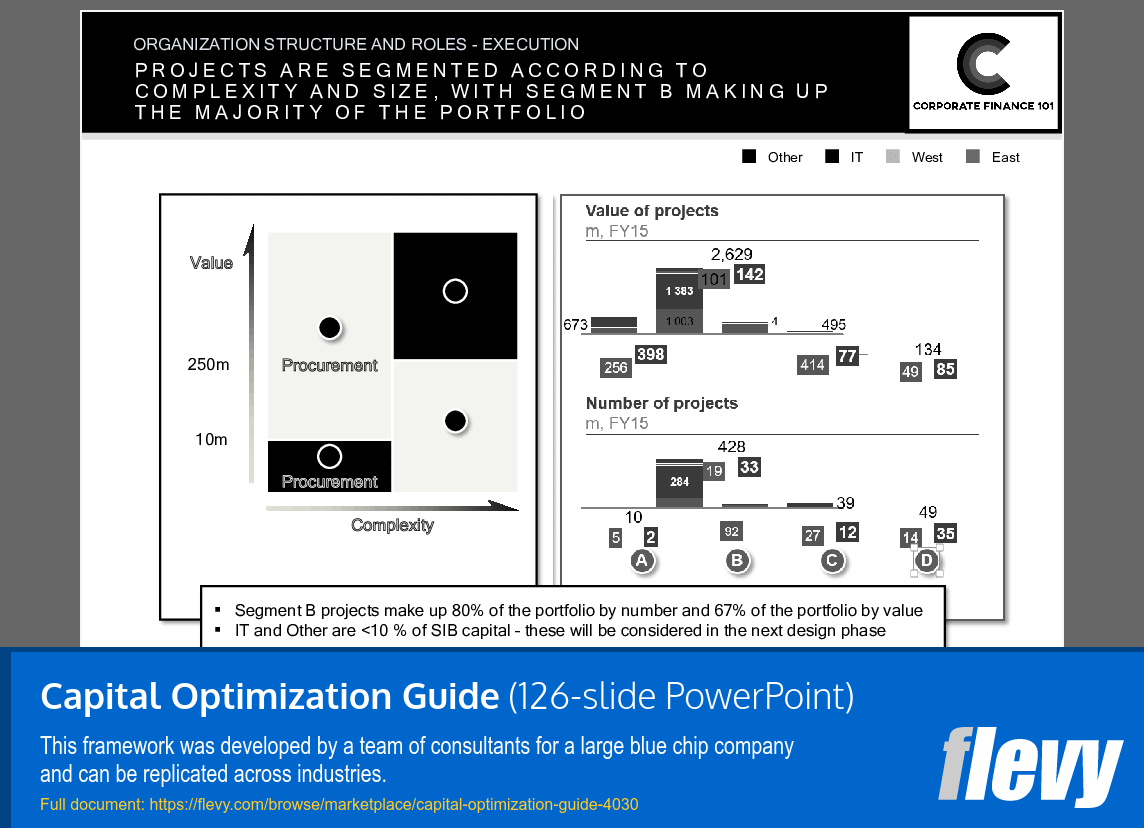
This PPT slide presents a framework for project segmentation based on complexity and size, focusing on how these factors influence the overall portfolio. The primary takeaway is that Segment B projects dominate both the number of projects and their associated value within the portfolio. Specifically, Segment B accounts for 80% of the total project count and 67% of the total value, indicating a significant concentration of resources and attention in this segment.
The visual representation includes a two-dimensional graph where the vertical axis denotes project value, ranging from 10 million to 250 million, while the horizontal axis measures complexity. The placement of projects within this graph highlights the relationship between their complexity and value. The terms "Procurement" are noted in both quadrants, suggesting that procurement-related projects are prevalent across varying levels of complexity.
On the right side of the slide, further details are provided regarding the total value of projects for FY15, totaling 2,629 million, with a breakdown of values for different segments. The number of projects is also detailed, showing a total of 428 projects. The data indicates that while Segment B is substantial, other segments like IT and Other contribute less than 10% of the total capital, suggesting that these may require further evaluation in future phases.
This analysis provides insight into where to focus efforts and resources, particularly emphasizing the importance of Segment B in driving portfolio performance. Understanding this segmentation can guide strategic decisions and resource allocation moving forward.
Organizational Framework for SIB Execution Strategies
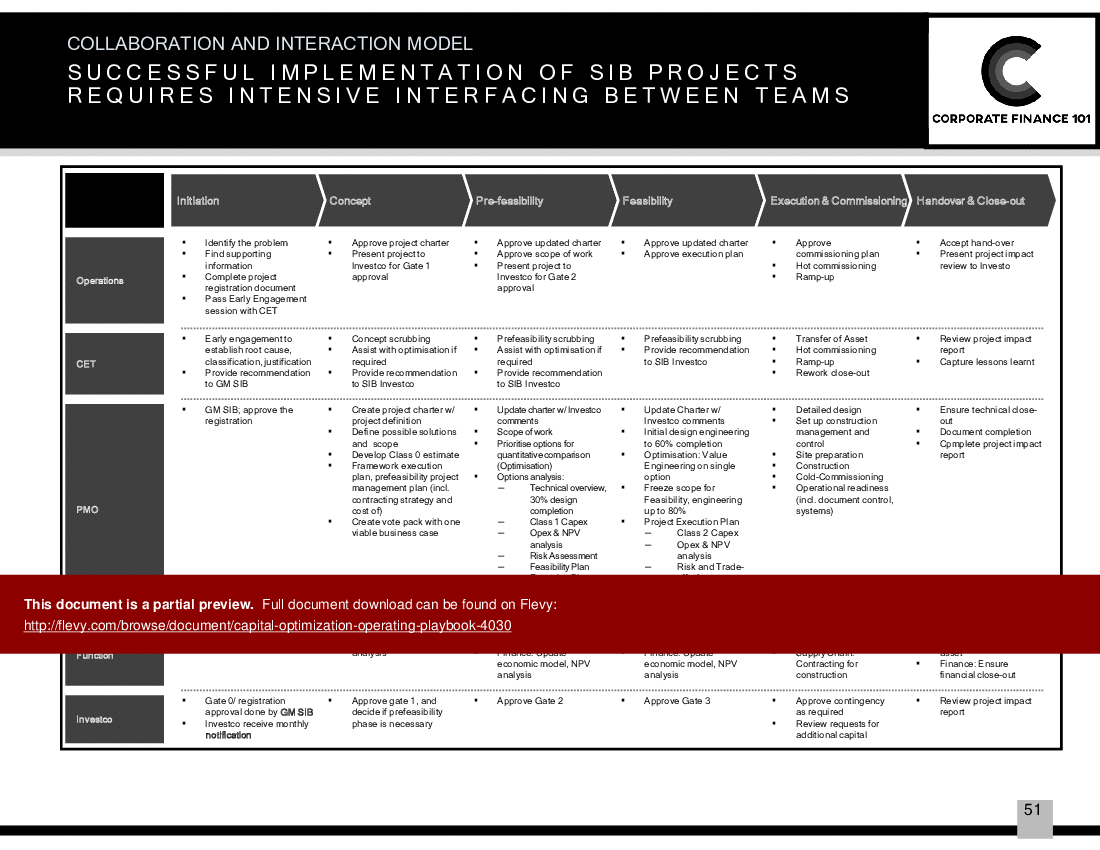
This PPT slide presents an organizational framework for executing primary SIB (Strategic Investment Business) initiatives, emphasizing a functional design complemented by a secondary value chain split. It is divided into 3 main sections: Value Chain Split, Project Stage Split, and Geographical Split, each outlining the pros and cons associated with different organizational structures.
In the Value Chain Split section, the focus is on mining and processing projects. The advantages highlighted include full ownership throughout the project lifecycle, specialization based on technical skills, and alignment with operations management. However, potential downsides are also noted, such as the risk of silo mentality between mining and processing, inefficiencies in the current structure, and a lack of specialization in project stage skills.
The Project Stage Split section emphasizes the importance of front-end project stages and execution. The benefits include a greater focus on project specialization and improved documentation practices. Yet, challenges arise from potential handover issues that could lead to rework and reduced ownership, as well as a lower degree of specialization in value chain steps.
Lastly, the Geographical Split section discusses the advantages of regional hubs for integrating full value chains, facilitating quicker issue resolution, and enhancing project credibility. However, it also warns of resource-intensive structures and the risk of limited cross-regional learning.
Overall, the slide serves as a comprehensive guide for executives considering different organizational designs for SIB execution, providing a balanced view of the benefits and challenges associated with each approach.
Identifying Challenges in the Capital Process
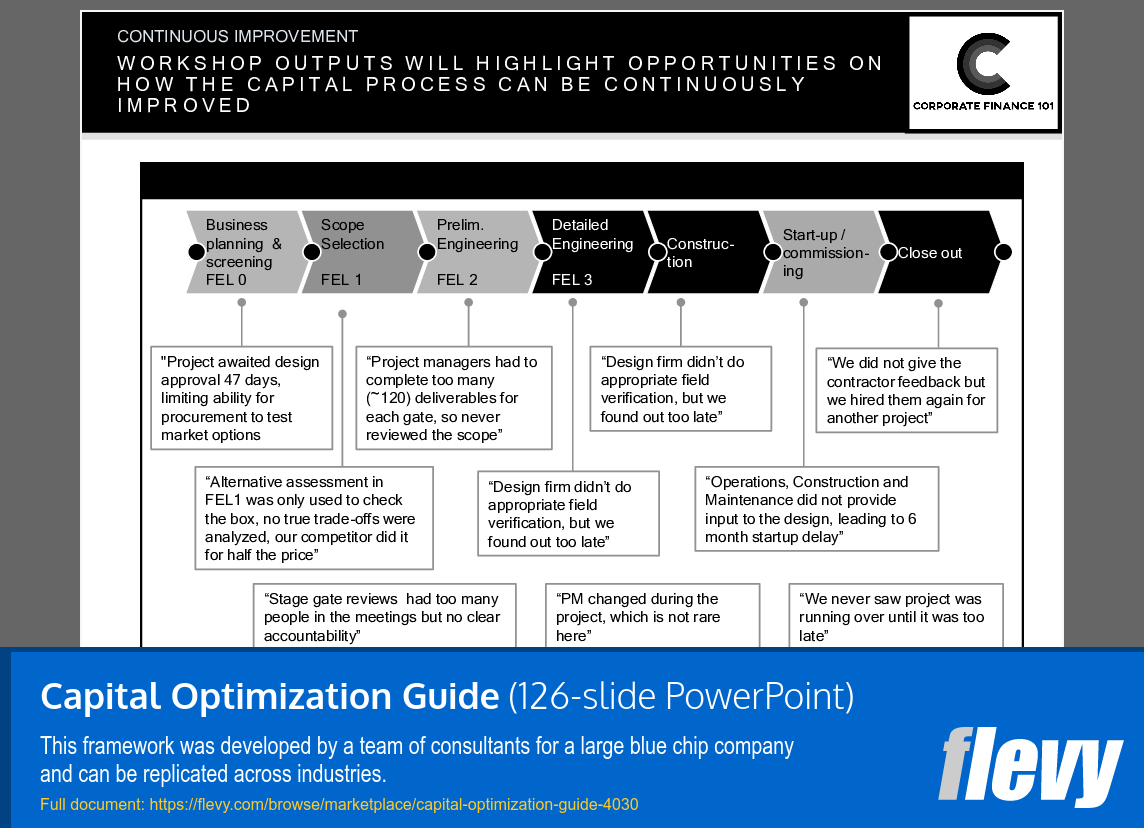
This PPT slide presents a structured overview of the capital process, highlighting key phases and associated challenges. It is organized into several stages: Business Planning & Screening (FEL 0), Scope Selection (FEL 1), Preliminary Engineering (FEL 2), Detailed Engineering (FEL 3), Construction, Start-up/Commissioning, and Close Out. Each phase includes specific feedback or issues encountered, illustrating areas for potential improvement.
In the initial phase, it notes delays in design approval that hindered procurement efforts. This suggests a need for more efficient decision-making processes. The second phase highlights an overwhelming number of deliverables required from project managers, indicating a potential for streamlining project management practices to enhance focus on critical tasks.
The feedback from the Detailed Engineering phase points to deficiencies in field verification by the design firm, which were only discovered late in the process. This raises concerns about the adequacy of oversight and communication between teams. The Construction phase feedback emphasizes a lack of contractor feedback, which could lead to repeated mistakes in future projects.
The Start-up/Commissioning phase reveals a disconnect between operations, construction, and maintenance teams, resulting in significant delays. This underscores the importance of cross-functional collaboration and input during the design phase to avoid costly setbacks. Lastly, the Close Out phase reflects on project oversight, indicating that issues were not monitored effectively until it was too late.
Overall, the slide serves as a diagnostic tool, pinpointing specific pain points throughout the capital process. It emphasizes the necessity for continuous improvement and better accountability at each stage to enhance overall project execution and outcomes.
Framework for Capital Governance and Execution

This PPT slide outlines the core business processes involved in capital governance and implementation, specifically within the frameworks of SIB CET and SIB PMO. It is structured into 4 main sections, each representing a critical phase in the capital management lifecycle.
The first section focuses on "Capital Scrubbing and Optimisation." This phase emphasizes early engagement, data collection, and the scrubbing of information to ensure accuracy. The goal is to optimize individual projects and provide actionable recommendations.
Next is "Portfolio Management," which involves gathering data, prioritizing projects, and allocating the capital budget. This section culminates in budget approval and reporting, indicating a structured approach to managing financial resources effectively.
The third section, "Gate Governance," outlines the approval process. Key activities include agreeing on the approval path, ensuring quality submissions, and closing out gate conditions. This phase is crucial for coordinating impact reviews, ensuring that projects align with strategic objectives.
Finally, "Projects Execution" details the steps from registration and early engagement through to execution and handover. This section highlights the importance of feasibility studies and concept validation, ensuring that projects are not only initiated, but also executed effectively.
The slide also notes interactions with various functions such as engineering, finance, supply chain, and operations. This indicates a collaborative approach, essential for successful project delivery. Overall, the slide serves as a comprehensive guide for organizations looking to refine their capital management processes.
Structured Governance for Engineering Lifecycle
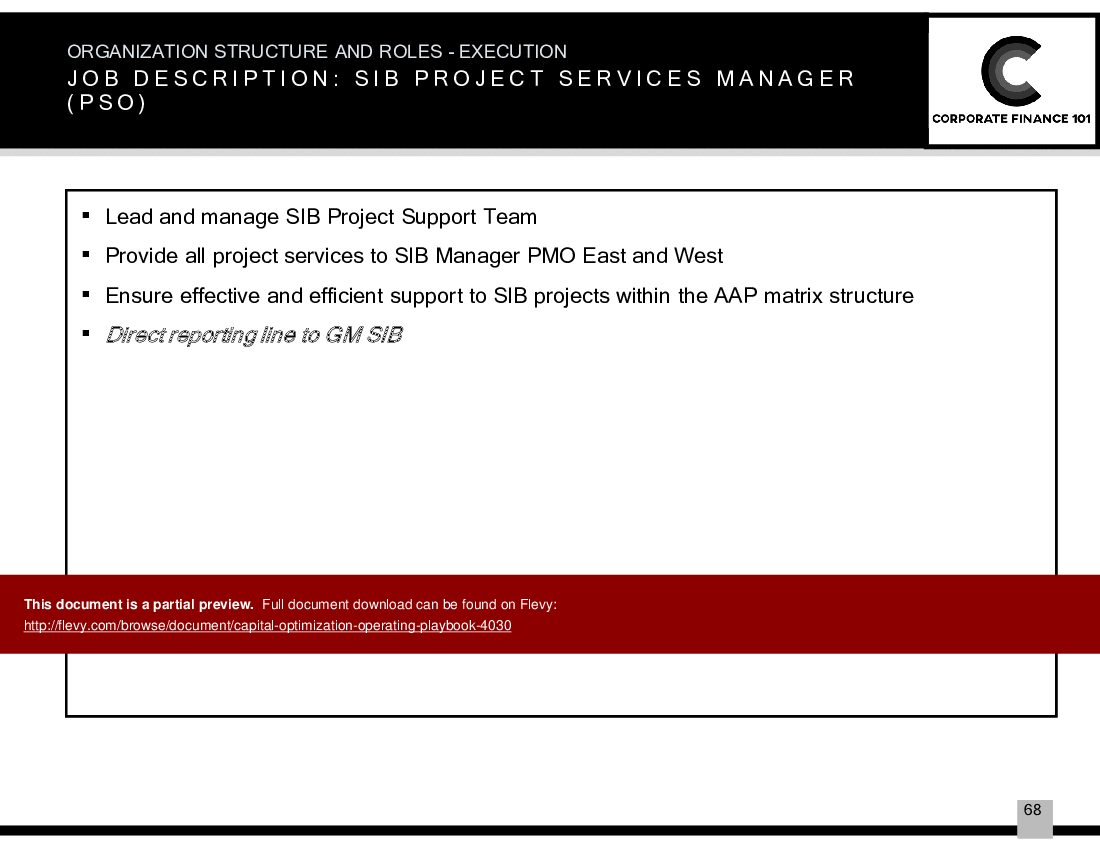
This PPT slide outlines a structured governance and approval process for Segment B projects, specifically in engineering and construction with budgets ranging from $0 to $250 million. The framework is divided into 5 key phases, each representing a critical step in project evaluation and decision-making.
The first phase, Early Engagement, focuses on validating the identified problem or opportunity. This involves establishing a root cause based on factual data and ensuring alignment on business fit and project classification. The segmentation of execution steps and the approval path are also documented, setting the stage for subsequent phases.
In the second phase, Concept (FEL1) Scrubbing and Optimization, the value of the identified problem is assessed. High-level solutions are reviewed, and a preliminary cost estimate is provided. This phase emphasizes the need for a decision on whether multiple solutions should be explored, alongside the option to generate alternatives.
The Pre-feasibility (FEL2) Check-in and Optimization phase follows, where capital and operating costs are estimated for various solutions. This phase includes a detailed examination of business cases and interdependencies, ensuring a clear linkage between problems and proposed solutions.
The Feasibility (FEL3) Scrubbing phase involves a thorough economic evaluation, revisiting capex and opex estimates, and refining project scope and KPIs. The final phase, Project Impact Review, assesses the overall project report to verify if key performance indicators (KPIs) are met, alongside a review of the project cost versus budget.
This structured approach ensures that projects are rigorously vetted at each stage, minimizing risks and enhancing the likelihood of successful execution.
Project Classification by Value and Complexity
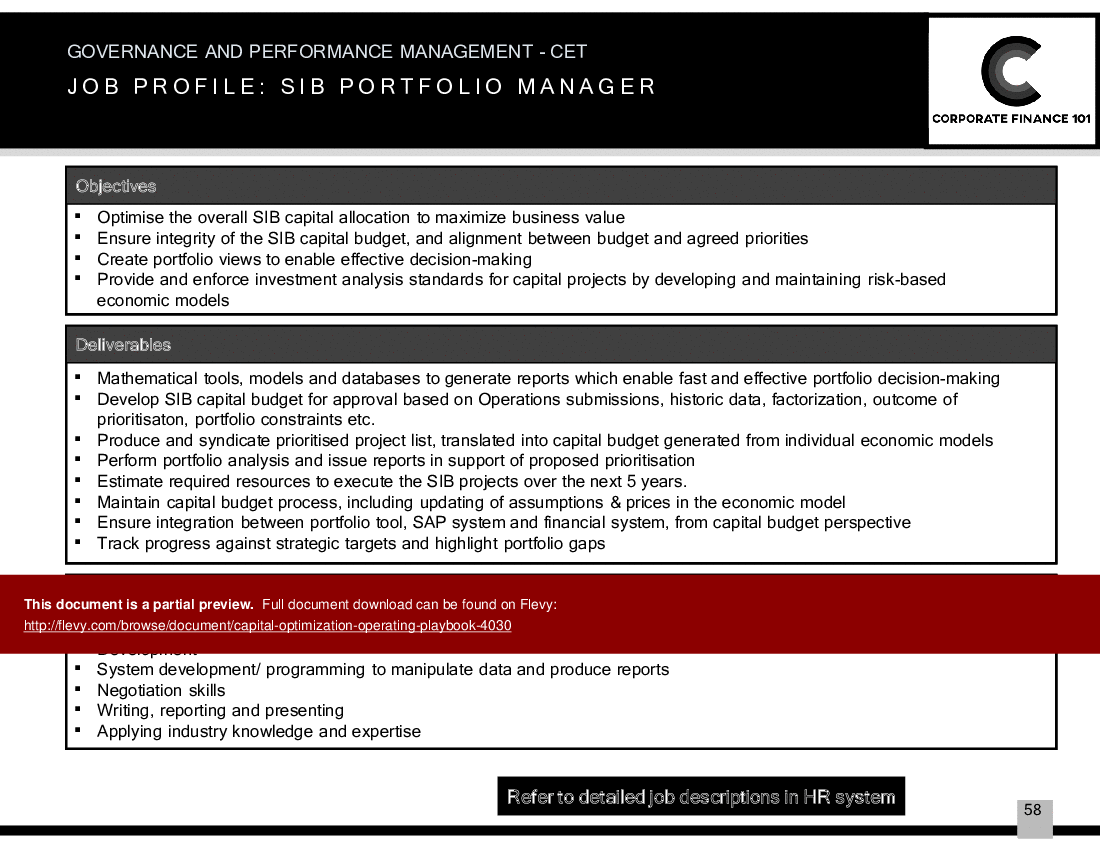
This PPT slide presents a framework for classifying projects based on their resource intensity, specifically in the context of governance and performance management. It employs a two-dimensional matrix with "Value" on the vertical axis and "Complexity" on the horizontal axis. The value scale ranges from R10 million to over R250 million, while complexity appears to categorize projects from basic procurement tasks to more intricate construction and maintenance activities.
In the lower left quadrant, the focus is on procurement, distinguishing between "off the shelf" and "specified" procurement options. This suggests a foundational level of project engagement, likely involving lower resource intensity. As you move rightward, the complexity escalates, encompassing various project types such as fabrication and installation, single and multi-discipline construction, and specialized maintenance tasks. The upper right quadrant highlights projects exceeding R250 million, indicating high resource demands and complexity.
The slide also notes that current projects constitute a significant portion of the portfolio, making up 80% of the number of projects and 57% of the total value. This statistic underscores the importance of effectively managing these projects to optimize resource allocation and ensure successful execution.
Overall, this classification system provides a clear visual representation of how projects can be assessed based on their financial implications and operational intricacies. It serves as a valuable tool for executives aiming to prioritize initiatives and allocate resources more effectively. Understanding where projects fall within this matrix can guide decision-making and strategic planning.
Structured Process for Scrubbing Report Sign-Off

This PPT slide outlines a structured process for scrubbing report sign-off, emphasizing a one-week timeframe for completion. It is divided into 5 key phases, each representing a day in the review and approval cycle.
On Day 1, the CET Leader reviews an electronic version of the report sent by the CET reviewer. The CET Leader is expected to provide comments within 24 hours, ensuring timely feedback. This initial review is crucial as it sets the tone for subsequent revisions.
Day 2 focuses on internal sign-off. The CET reviewer updates the report based on the CET Leader's comments and sends it back for management's input within the same 24-hour window. The CET reviewer then prints the final version and secures the CET Leader's signature, indicating internal approval.
Days 3 to 5 are dedicated to issuing the report to the sponsor. The CET reviewer sends the signed version (PDF) to the sponsor for their signature. A best practice mentioned is arranging a face-to-face meeting, particularly if the report's recommendations are not favorable. This step is essential for transparency and to address any concerns directly.
Finally, on Day 5, the scrubbing report is submitted to Investco, ideally one week before the scheduled meeting. A copy is also sent to the Executive Head of Projects. This structured approach ensures that all stakeholders are aligned and that the report is thoroughly vetted before reaching the sponsor, enhancing the overall quality and reliability of the document.
Structured Framework for EPCM Stage Gate Process

This PPT slide outlines a structured framework for the Stage Gate Implementation Process tailored for the EPCM (Engineering, Procurement, and Construction Management) model. It is divided into 5 main process steps: Registration, Concept, Pre-feasibility, Feasibility, and Execution, each with specific timing, responsible parties, key activities, and outputs.
The timing and duration for each step are clearly defined, starting with Registration, which takes 5 man-days, progressing to Concept, requiring 2 weeks with 3 people, and culminating in Execution, which is project-dependent. This structure emphasizes the importance of time management and resource allocation throughout the project lifecycle.
Key activities are detailed for each phase. For instance, during Registration, activities include identifying the problem, gathering supporting information, and approving the registration. The Concept phase focuses on creating a project charter and defining the universe of possible solutions. As the process advances to Pre-feasibility and Feasibility, the emphasis shifts to risk assessment, financial modeling, and optimizing engineering options.
Outputs are also specified, such as preliminary business proposals and approvals at various stages. This systematic approach ensures that each phase builds on the previous one, allowing for informed decision-making and minimizing risks.
The slide serves as a comprehensive guide for stakeholders involved in project management, providing clarity on roles, responsibilities, and expectations. It highlights the critical nature of each phase and the need for thorough preparation and evaluation before moving forward. This framework can be invaluable for organizations seeking to streamline their project execution processes and enhance overall efficiency.
Framework for Business Value Creation and Governance

This PPT slide outlines a structured approach to delivering business value through a comprehensive framework that integrates key processes, governance, and capabilities. The central theme revolves around creating business value, which is broken down into 3 primary components.
The first component emphasizes the creation of business value through key processes. This includes capital scrubbing and optimization, which suggests a focus on refining investment strategies to ensure that capital is allocated efficiently. Portfolio management is highlighted, indicating the importance of overseeing a collection of investments to maximize returns. Gate governance and the stage gate implementation process are also mentioned, which implies a systematic approach to project management, ensuring that projects meet specific criteria before advancing. Standardized tools and templates are noted, suggesting a push for consistency and efficiency in execution.
The second component addresses governance and performance management. It details the organizational design and roles of the SIB CET and SIB PMO, which are likely critical to maintaining oversight and accountability. Key Performance Indicators (KPIs) and capital approval steps are also included, underscoring the need for measurable outcomes and structured decision-making processes. The mention of SIB Investco suggests a focus on investment management within this governance framework.
The third component focuses on mindsets and capabilities. It outlines the need for CET and PMO capabilities, along with training and certification programs. This indicates a commitment to building the necessary skills and knowledge within the organization to support the overall framework.
Overall, this slide presents a cohesive strategy aimed at enhancing business value through structured processes, robust governance, and a focus on capability development.
Execution Phase Activities in EPCM Model

This PPT slide outlines the core business processes involved in the execution phase of an EPCM (Engineering, Procurement, and Construction Management) model, specifically focusing on Gates 3-4. It presents a structured approach to project management, detailing key activities, accountability, responsibilities, and required inputs.
Key activities begin with resource assignment, which includes roles such as project engineers, planners, cost controllers, and supply chain managers. This initial step is crucial for establishing a solid foundation for the project. Each role is linked to specific accountable parties, primarily within the engineering department and project management teams. This clear delineation of responsibilities ensures that all aspects of the project are managed effectively.
The slide further elaborates on detailed design and design approval processes, emphasizing the significance of engineering input. The project manager plays a pivotal role in overseeing the construction management and control phase, which is essential for maintaining project timelines and budgets.
Contracting for construction is another critical activity, with the project manager and supply chain manager being responsible for this task. This section highlights the importance of collaboration between various stakeholders to ensure smooth operations.
Site preparation and construction phases are also outlined, with designated managers overseeing these activities. The slide concludes with operational readiness, which includes maintenance considerations, underscoring the need for a comprehensive approach to project execution.
Overall, this slide serves as a valuable framework for understanding the execution phase of an EPCM model, providing insights into the roles and responsibilities necessary for successful project completion.
Aligning KPIs for Effective Governance
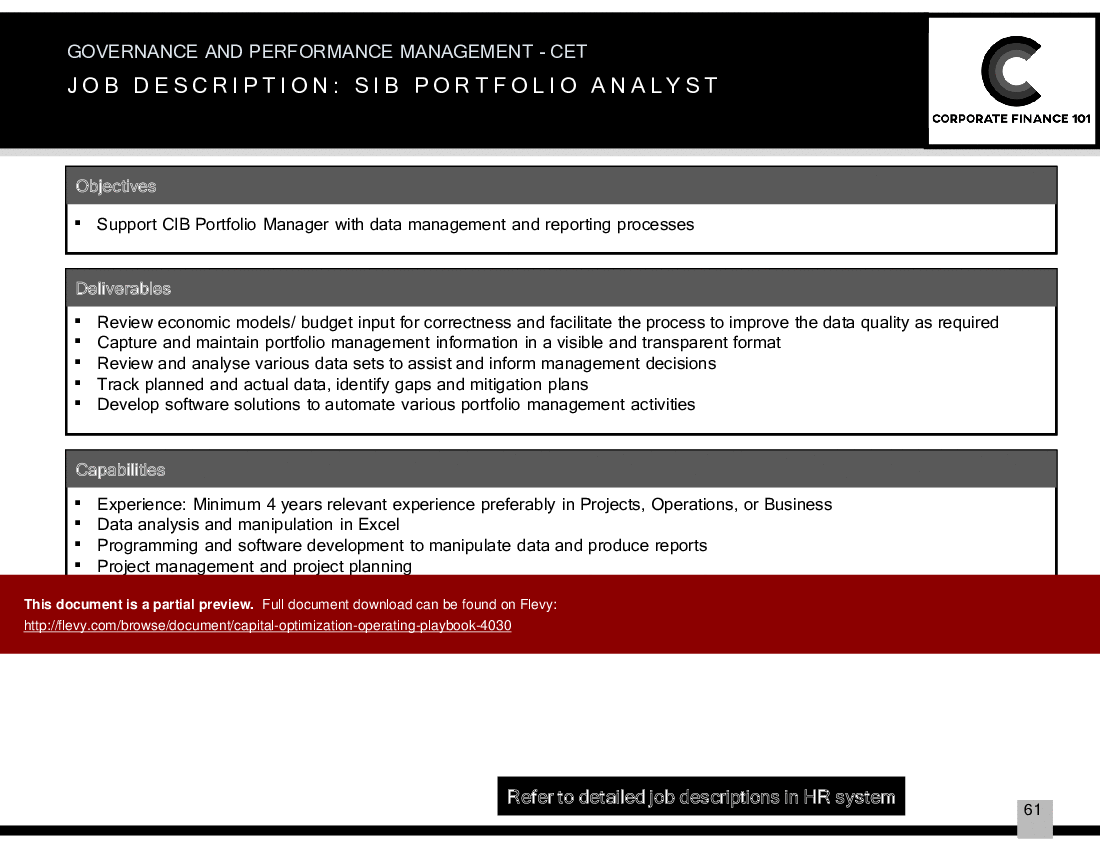
This PPT slide presents a framework for aligning key performance indicators (KPIs) among 3 roles: Sponsor, GM SIB, and CET, focusing on project governance and performance management. It categorizes KPIs into 4 main areas: Portfolio, Governance, FEL (Front-End Loading), and Execution. Each KPI is assessed for its applicability to the 3 roles, indicated by checkmarks and crosses.
The first KPI, NPV/Investment of project portfolio, is relevant to all 3 roles, highlighting its importance in evaluating project viability. The second KPI addresses unplanned spending, showing that while the Sponsor and CET roles are accountable, GM SIB is not, which may suggest a gap in oversight.
Further down, the slide details the percentage of projects scrubbed prior to the approval gates, emphasizing the necessity for early-stage scrutiny. However, the KPI regarding scope changes post-contract award reveals a lack of alignment for GM SIB, which could lead to potential project overruns.
The slide also examines differences between projected and actual NPV, underscoring the need for accurate forecasting and accountability. The metrics on stage-gate submissions and budget overruns provide insights into operational efficiency and project management effectiveness.
Finally, the focus on post-project reviews indicates a commitment to continuous improvement, although the lack of alignment in some areas may hinder collaborative efforts. Overall, the slide serves as a critical tool for organizations aiming to enhance project governance and ensure that all stakeholders are aligned in their objectives.
SIB Business Case Template: Evaluation and Support Guide

This PPT slide presents an overview of the SIB Business Case Template, which serves as a quantitative evaluation tool for project assessment. It outlines 4 key sections: when to use the template, what information to complete, reasons for its utilization, and how to obtain assistance.
The "When to use it?" section emphasizes the importance of filling out the template before the initial scrubbing session. This early engagement is crucial for capturing all currently known information. It also suggests updating the template as the project evolves, ensuring that the data remains relevant and accurate throughout the project lifecycle.
In the "What to complete?" section, the slide details the necessary inputs for all projects, including project parameters and team details. It highlights optional components such as parameters and capital expenditures for expansionary or cost-saving projects, as well as direct benefits. This structured approach ensures that all relevant aspects of a project are considered, facilitating comprehensive evaluations.
The "Why use it?" segment articulates the primary benefits of employing the template. It quantifies project benefits in monetary terms, aiding decision-making processes. Projects that indicate a negative payback period are flagged as less likely to receive approval, thus guiding stakeholders in prioritizing viable initiatives.
Lastly, the "How do I get help?" section provides resources for users seeking assistance. It mentions available training from the CET, a dedicated page on Eureka for frequently asked questions, and the option to receive direct support from the CET as needed. This structured support framework enhances user confidence in utilizing the template effectively.
Standardized Framework for Business Case Evaluation

This PPT slide outlines the collaborative framework between the SIB CET and SIB PMO, emphasizing the importance of a standardized process for evaluating business cases. It highlights several key features of the Capital Excellence Team, which operates with a small, specialized group that brings focused expertise across various projects. This structure is designed to create a centralized environment for business case development, ensuring that all projects benefit from a consistent approach.
The slide also details the components involved in developing a business case, which are categorized into 4 essential phases: Commercial validation, Technical validation, Project management, and Execution readiness. Each phase serves a distinct purpose. Commercial validation focuses on defining desired business outcomes and assessing the commercial viability of the projects. Technical validation ensures that the projects meet real capacity requirements and confirms the necessary technical specifications.
Project management is aimed at optimizing schedules and defining contracting strategies to streamline execution. Lastly, execution readiness emphasizes the importance of establishing a clear organizational structure and implementing active risk management and performance metrics.
The visual representation of the process, with business cases flowing through various evaluation stages, reinforces the systematic approach taken by the team. This structured methodology not only enhances transparency, but also builds confidence in the decision-making process for stakeholders. Overall, the slide effectively communicates how the collaboration between the SIB CET and SIB PMO leads to a robust framework for project evaluation and approval.
Evaluating Benefits: Direct and Indirect Insights

This PPT slide outlines a structured approach for evaluating potential projects through a tool designed for capturing both direct and indirect benefits. It emphasizes the importance of completing specific sheets based on the nature of the project.
The section labeled "Option direct benefits" instructs users to fill out the relevant sheet if the project is expected to yield cost savings or enhance production and revenues. It highlights the need for detailed documentation of any additional production metrics, such as tonnes, and any changes in associated costs. This clarity is crucial for assessing the tangible financial impact of a project.
On the other hand, the "Option indirect benefits" section focuses on projects that are essential for maintaining current production levels. Here, the slide indicates that a comparative analysis—before and after the project's implementation—is necessary. This analysis should also include metrics related to production volumes, providing a comprehensive view of how the project supports ongoing operations.
The slide's layout suggests a methodical approach to project evaluation, reinforcing the need for precise data collection and analysis. By clearly distinguishing between direct and indirect benefits, it helps stakeholders understand the multifaceted impacts of their decisions. This tool can serve as a valuable resource for executives looking to make informed decisions about capital allocation and project prioritization. The structured format allows for easy navigation and ensures that all relevant information is captured systematically, enhancing the overall decision-making process.
Identifying Barriers to Capital Excellence

This PPT slide outlines various challenges that impede capital excellence across 3 distinct levels: project, portfolio, and organization.
At the project level, 3 key issues are highlighted. First, "Unclear justification" indicates that projects may lack a solid rationale, which can lead to misallocation of resources. Second, "Lack of front end loading" suggests that insufficient planning and analysis at the initial stages can hinder project success. Lastly, "Insufficient optimisation of individual projects" points to the failure to maximize the potential benefits of each project, which can result in wasted investments.
Moving to the portfolio level, 2 significant challenges are identified. "Missing portfolio optimisation" reveals that without a strategic approach to prioritizing projects, organizations may struggle to align their resources effectively across various business units. The second point, "Fragmented spend visibility at portfolio level," indicates a lack of comprehensive insight into expenditures, making it difficult to assess overall financial health and project performance.
At the organizational level, 3 additional barriers are presented. The first, "Complex SIB execution structure," suggests that the existing structure may not be conducive to effective decision-making, particularly in a matrix organization. The second challenge, "Indifference and lack of an ‘ownership mindset’ when spending capital," highlights a cultural issue where stakeholders may not feel accountable for financial decisions. Finally, "Current incentives drive sub-optimal capex-opex trade-off behaviour" indicates that existing incentive structures may encourage poor financial choices, further complicating capital management.
This analysis underscores the multifaceted nature of challenges in achieving capital excellence, offering insights for organizations seeking to enhance their financial strategies.
Defining the Role and Scope of SIB PMO

This PPT slide outlines the essential role of the SIB Project Management Office (PMO) in executing projects effectively. It begins by highlighting the consolidation of a previously fragmented execution structure into a single PMO, now overseen by the newly appointed General Manager SIB. This centralization is aimed at streamlining project management and enhancing accountability.
The left section of the slide details what the SIB PMO is. It serves as the primary vehicle for project implementation, guiding projects from inception through to close-out across all phases of the APW. The PMO is tasked with delivering the promised business value from project proposals, thereby maximizing shareholder value. It operates within a matrix structure, leveraging support from key organizational functions. Collaboration with Operations is emphasized, particularly in identifying and addressing root causes of any issues that arise during project execution. Resources are allocated to ensure these objectives are met.
Conversely, the right section clarifies what the SIB PMO is not. It explicitly states that the PMO should not be viewed as an extension of Operations. Its responsibilities extend beyond mere execution and construction; it must also ensure proper front-end design. Importantly, the PMO cannot delegate accountability for project implementation and outcomes to third-party contractors. This distinction underscores the critical nature of the PMO's role in maintaining oversight and ensuring project success.
Overall, the slide presents a clear framework for understanding the SIB PMO's responsibilities and limitations, reinforcing its importance in delivering value through structured project management.
Performance Management Framework for CET Members
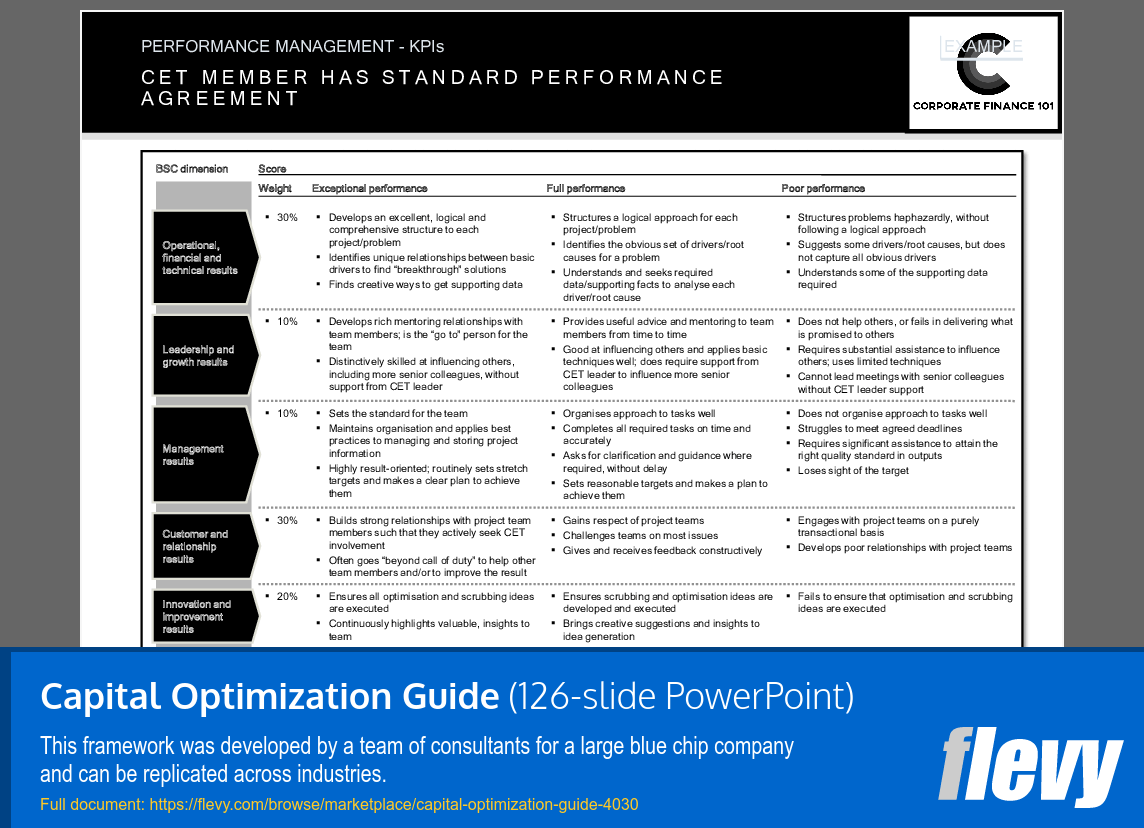
This PPT slide outlines a performance management framework focused on Key Performance Indicators (KPIs) for CET members, categorized under various Balanced Scorecard (BSC) dimensions. Each dimension is assigned a specific weight, indicating its importance in evaluating overall performance.
The first dimension, "Operational, financial and technical results," carries the highest weight of 30%. Exceptional performance in this area involves developing a logical structure for projects, identifying unique relationships that drive solutions, and creatively sourcing data. Full performance meets basic expectations, while poor performance reflects a lack of logical structure and failure to identify key drivers.
The second dimension, "Leadership and growth results," also weighted at 10%, emphasizes mentoring relationships and influencing skills. Exceptional performance here means being the go-to person for the team and effectively influencing senior colleagues. Full performance meets expectations, while poor performance indicates a significant need for support and guidance.
"Management results," another 10% weight, focuses on organizational skills and task management. Exceptional performers set standards and maintain organization, while those performing poorly struggle to meet deadlines and organize tasks effectively.
The "Customer and relationship results" dimension, weighted at 30%, highlights the importance of building strong relationships with project team members. Exceptional performance includes actively engaging team members, while poor performance shows a lack of engagement and feedback.
Finally, "Innovation and improvement results," weighted at 20%, stresses the need for continuous optimization and valuable insights. Exceptional performance involves ensuring that ideas are executed effectively, while poor performance indicates failure to optimize processes.
This structured approach provides a clear framework for assessing performance across multiple dimensions, ensuring that all critical areas are evaluated comprehensively.
Multi-Phase Strategy for Capital Excellence
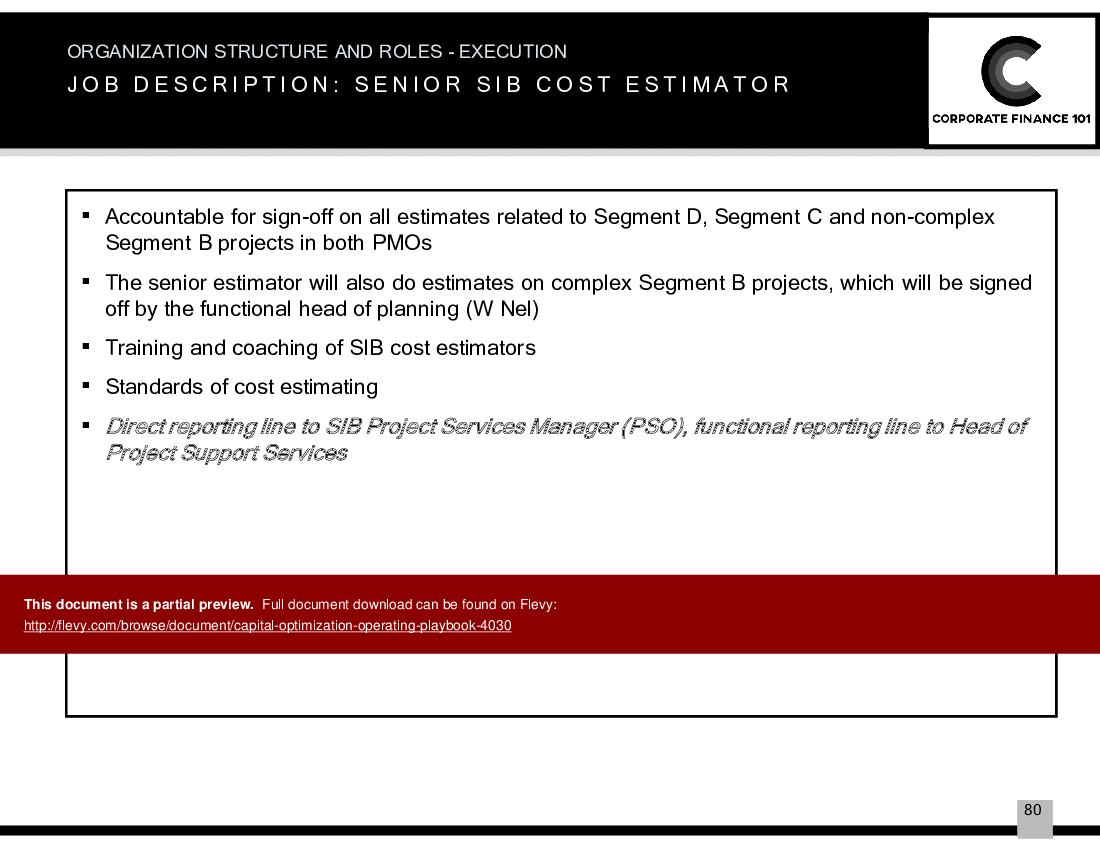
This PPT slide outlines a structured approach to achieving capital excellence across a group, detailing a multi-phase rollout strategy. It is segmented into 3 distinct phases: Proof of Concept, Proof of Feasibility, and Embedding. Each phase has specific objectives and questions that need to be addressed, guiding the organization through a systematic process.
In the Proof of Concept phase, the focus is on piloting scrubbing and optimization of specific projects within Company A's Strategic Investment Business (SIB) portfolio. Key actions include ensuring adequate resources, investing extra time in management attention, and optimizing governance processes. The emphasis on change management and capability building is critical, especially given the short timeframe, which necessitates the use of workarounds when necessary.
The Proof of Feasibility phase expands the initiative to 4 remaining business units (BUs), where the goal is to optimize the SIB portfolio across the group. This phase involves leveraging resources and tools from the pilot phase while tailoring strategies to each BU's unique structure and capabilities. It highlights the importance of learning from the pilot and balancing long-term solutions with short-term fixes.
Finally, the Embedding phase aims to integrate these solutions into all projects, ensuring that significant value continues to be created. This phase focuses on optimizing the full capital portfolio and embedding resources for sustained impact. Key questions revolve around sustaining value, standardizing processes, and capturing benefits from improved portfolio visibility.
This structured approach provides a clear roadmap for organizations aiming to enhance their capital management strategies, ensuring that each phase builds on the previous one for comprehensive success.
Matrix Structure for SIB CET and PMO Collaboration
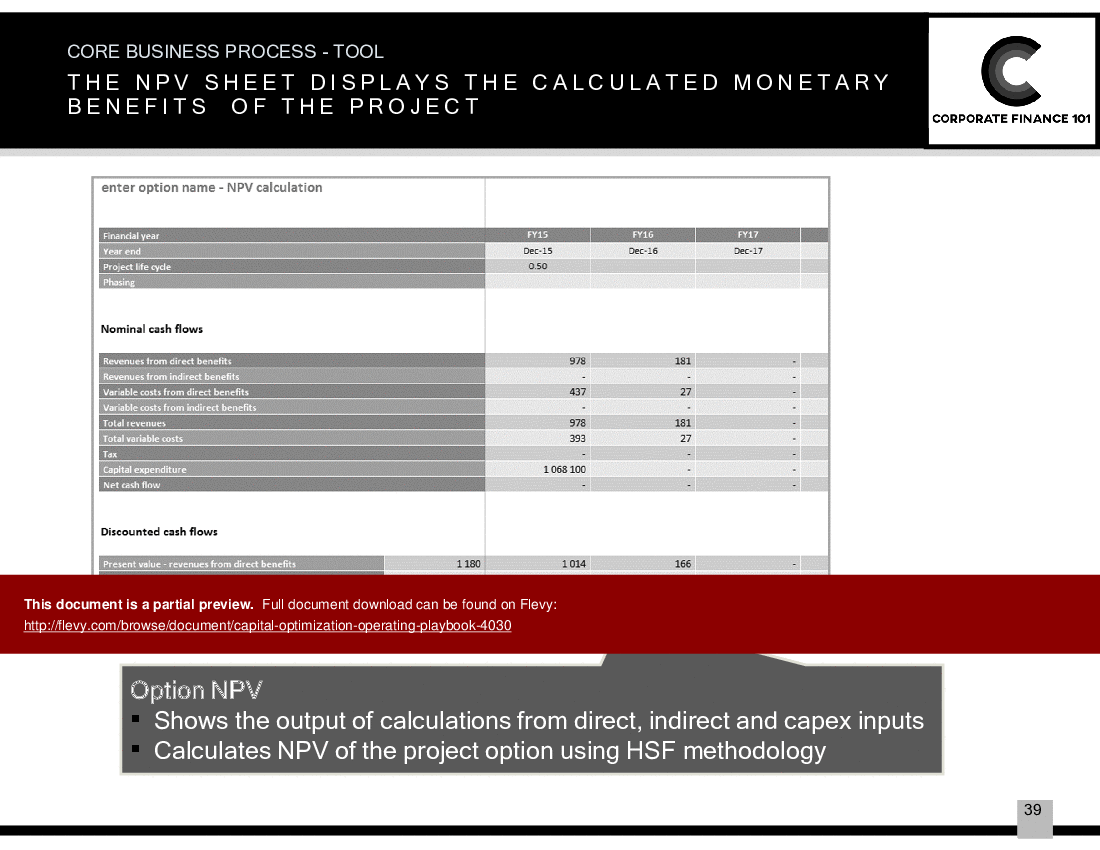
This PPT slide presents a matrix structure designed to enhance collaboration and interaction among various functions supporting the SIB CET and SIB PMO teams. Each function is strategically positioned to facilitate effective communication and operational efficiency.
Starting with the Supply Chain function, it emphasizes the importance of expert input in optimization processes, managing budget quotes, and contractor appointments. This function is crucial for ensuring that resources are allocated effectively and that projects are set up for success from the outset.
The Risk function highlights the need for assessing potential risks associated with the SIB portfolio. It includes project-level risk assessments and the qualification of risk mitigation strategies, which are vital for safeguarding project outcomes and aligning with business objectives.
Legal considerations are addressed through the Legal function, which provides ad hoc opinions on legislation relevant to mandatory projects. This ensures that all projects comply with legal requirements, reducing the risk of future complications.
Engineering plays a pivotal role by defining project scopes and ensuring that projects are front-loaded with necessary expertise. This function is essential for optimizing project execution and aligning technical requirements with strategic goals.
The SIB Investco function focuses on capital requests and approvals, ensuring that financial resources are aligned with project needs.
Finance is tasked with financial control and reporting, providing a comprehensive view of the SIB budget and portfolio. This function is critical for maintaining financial health and transparency across projects.
Finally, the Project Functional Support function offers essential project support services, including cost control and joint reviews, which are necessary for maintaining project integrity and accountability.
Overall, this matrix structure is designed to streamline processes and enhance collaboration across various functions, ultimately driving project success.
Project Prioritization and Budgeting Optimization Tool

This PPT slide outlines a structured approach to project prioritization and budgeting through a portfolio optimization tool. It begins with the importation of project business case data, ensuring that all relevant information is centralized for analysis. The next step involves validating these projects for any data errors or inconsistencies, particularly focusing on interdependencies among projects. This validation is crucial for maintaining the integrity of the portfolio.
Once the data is validated, the tool generates an initial portfolio ranked by profitability index, allowing decision-makers to quickly identify which projects offer the best financial returns. The evaluation of portfolio KPIs—financial, strategic, and composition—further enhances the analysis, providing a comprehensive view of the portfolio’s performance.
The tool also allows for manual modifications to the portfolio, enabling users to select, exclude, or adjust the timing of projects based on evolving business needs. This flexibility is important in dynamic environments where priorities may shift. Additionally, the evaluation of risk sensitivity and the ability to compare saved portfolios offer insights into potential vulnerabilities and opportunities.
The visual elements on the right side of the slide likely depict project validation statuses, rankings, and dependency logs, which are essential for understanding the interrelations and overall health of the project portfolio. The inclusion of graphs and charts aids in visualizing data trends and outcomes, making it easier for executives to grasp complex information quickly.
This tool appears to be a robust solution for organizations looking to enhance their project selection and budgeting processes, ultimately driving better resource allocation and strategic alignment.
Key Capabilities Supporting SIB PMO Value Proposition
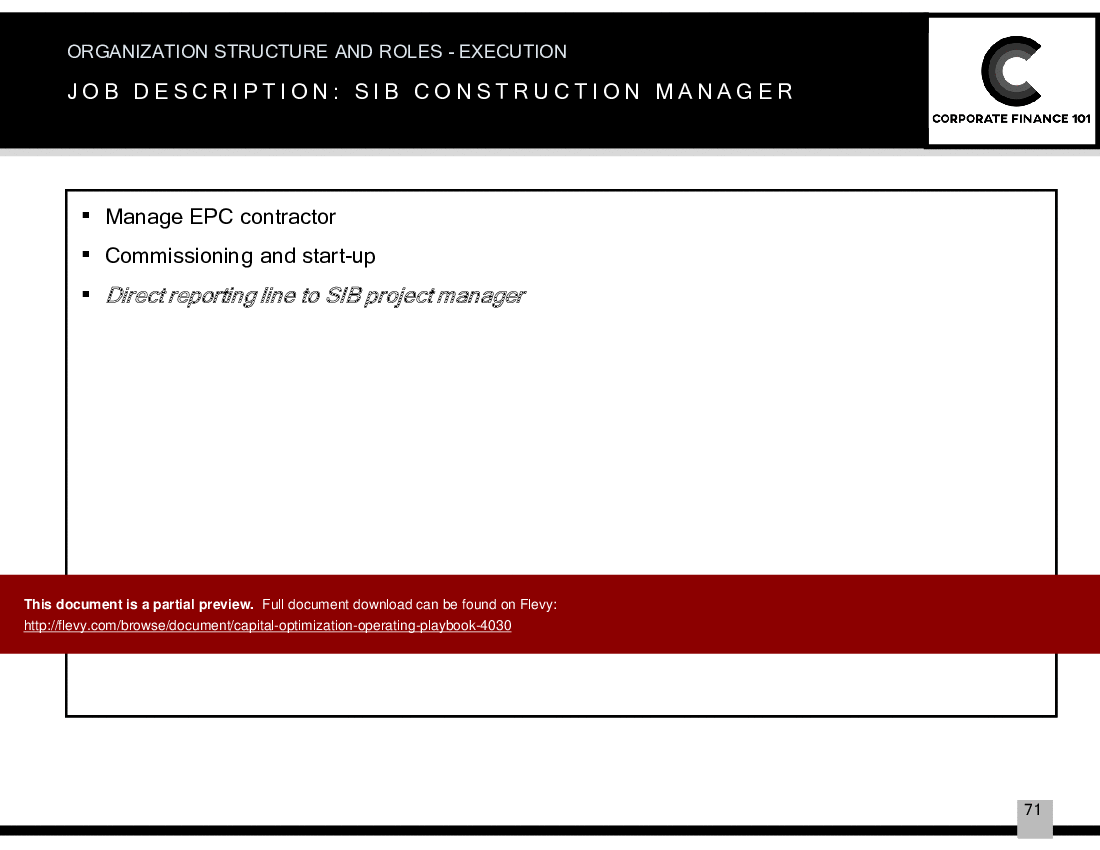
This PPT slide outlines key capabilities and mindsets that support the SIB PMO value proposition. It is structured into 5 main categories, each highlighting essential components necessary for effective project management.
The first section, "Front-end loading," emphasizes the importance of root cause analysis and business acumen. This suggests a focus on understanding underlying issues and economic modeling to inform decision-making. The mention of "optioneering" indicates a strategic approach to evaluating different project options before committing resources.
Next, "Project management principles" includes value engineering and project planning. These concepts are fundamental for optimizing project outcomes and ensuring that resources are allocated efficiently. Early involvement of procurement is also noted, which can enhance cost-effectiveness and streamline processes.
The "Contractor management" section stresses ownership in scope definition and management, indicating a proactive stance in overseeing contractors. In-house verification of cost estimates and effective cost and schedule management are highlighted as critical practices to maintain control over project parameters.
In "Construction and commissioning," the focus is on seamless integration with ongoing operations. This aspect is crucial for minimizing disruptions and ensuring that projects align with existing workflows. Safety and quality control are also mentioned, underscoring their significance in project execution.
Finally, "Project close-out" addresses contractual and financial aspects, along with technical documentation. The inclusion of a project impact review report suggests a systematic approach to evaluating project outcomes and learning from experiences. This comprehensive framework provides a solid foundation for organizations looking to enhance their project management capabilities.
Staffing Strategies for Corporate Efficiency Team
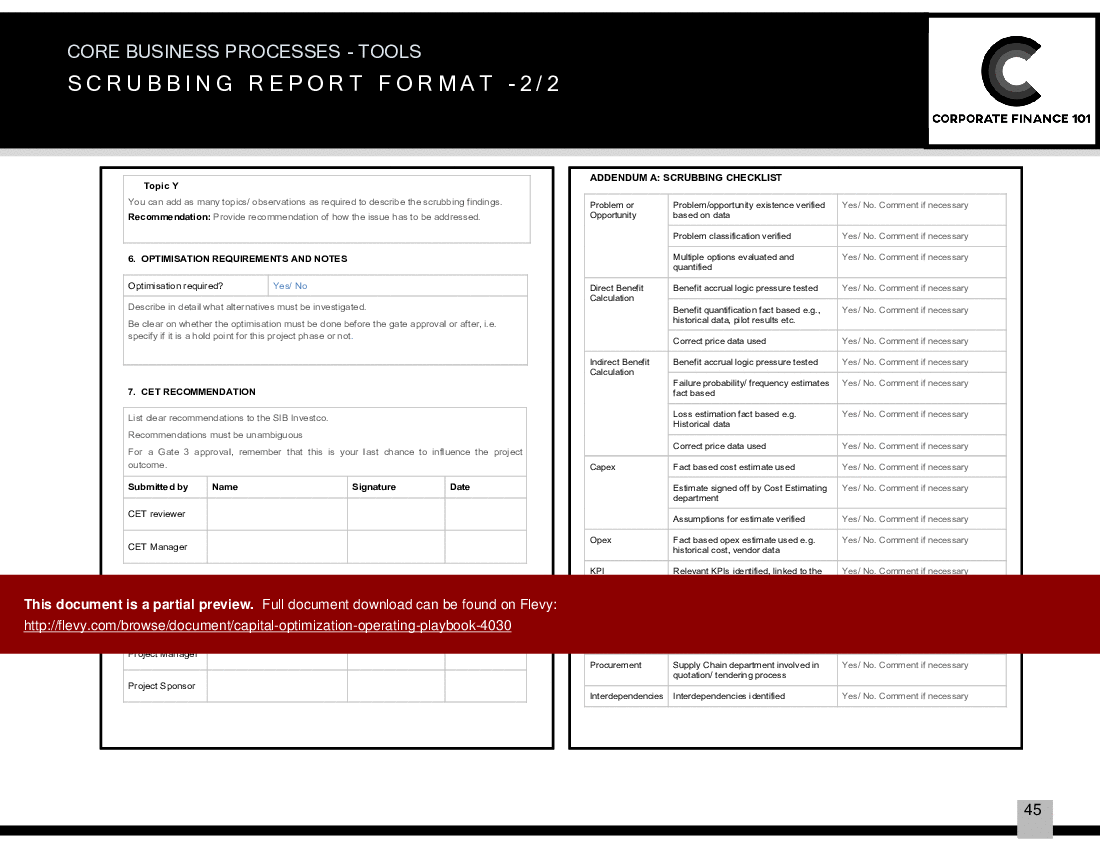
This PPT slide outlines the organizational structure and roles of a Corporate Efficiency Team (CET) that will be staffed with a combination of permanent and rotating members. It presents 3 staffing options: a permanent team, a fully rotating model, and a hybrid model. Each option includes details, pros, and cons, providing a comprehensive view of the implications of each approach.
The permanent team option suggests employing members full-time for an indefinite period. This model offers dedicated resources and embeds learning into daily operations. However, it faces challenges in staffing, as departments may be reluctant to lose their best talent, potentially constraining knowledge transfer across the organization.
The fully rotating model allows team members to join the CET for a limited period, typically 1-2 years, before returning to their regular roles. This approach increases employee involvement in optimization processes and brings fresh perspectives. Yet, it introduces complexities in workload management, as members must transition effectively between roles. Disruptions to the scrubbing process can occur due to training and onboarding new members, which may frustrate ongoing projects.
The hybrid model combines elements of both previous options, featuring a core team of 4 full-time members and 6 rotating members. This structure aims to maintain continuity while benefiting from diverse input. However, it still grapples with the challenges of managing workloads and ensuring that rotating members can effectively balance their responsibilities in both the CET and their regular jobs.
Overall, the slide serves as a strategic framework for decision-makers considering the optimal staffing structure for the CET, highlighting the trade-offs associated with each model.
Job Profile: Manager of SIB Capital Excellence
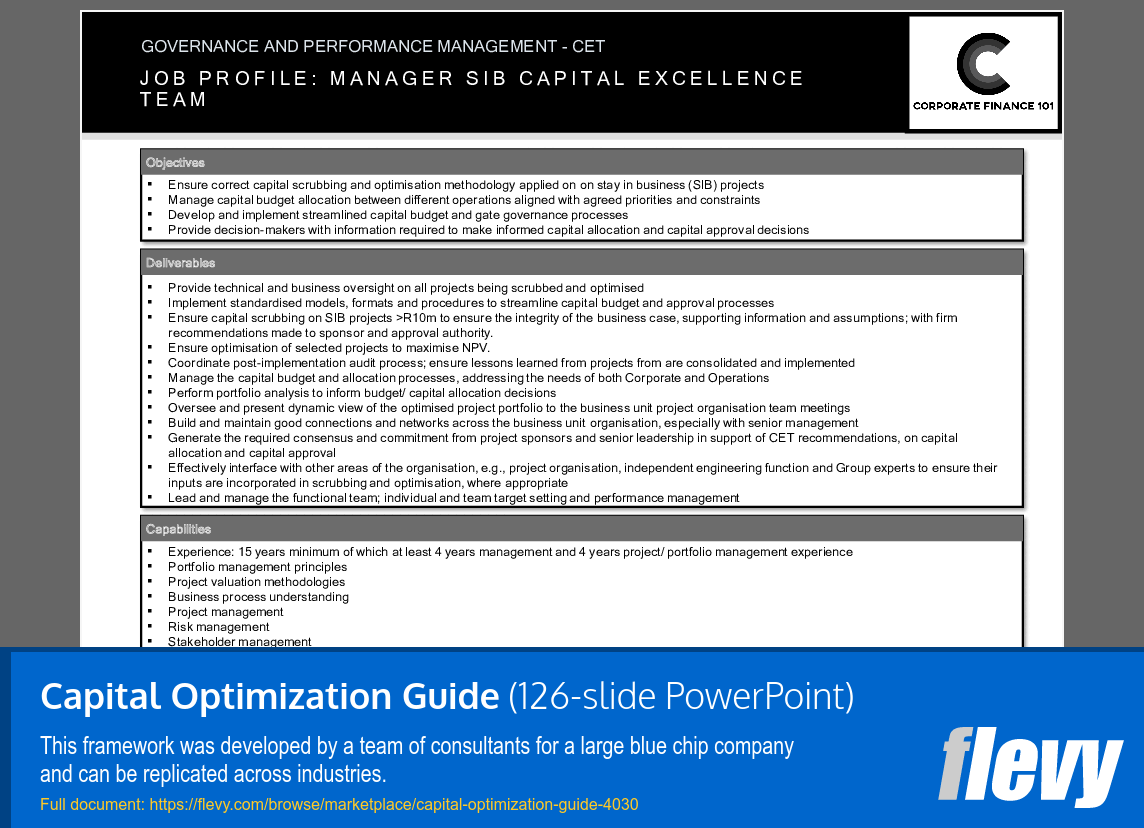
This PPT slide outlines the job profile for the Manager of the SIB Capital Excellence Team, focusing on governance and performance management within capital projects. The objectives section emphasizes the need for effective capital allocation and decision-making processes, particularly in managing stay-in-business (SIB) projects. The role requires ensuring that capital budgeting aligns with organizational priorities and constraints while also streamlining governance processes.
Deliverables detail the responsibilities associated with the position. The manager must provide oversight for all projects undergoing capital scrutiny, implement standardized models for budgeting, and ensure rigorous capital approval processes. A critical aspect is the optimization of selected projects to maximize net present value (NPV), which underscores the importance of financial acumen in this role. Additionally, the manager is tasked with coordinating post-implementation reviews to capture lessons learned, ensuring that insights are integrated into future projects.
The slide also highlights the need for strong interpersonal skills, as the manager must build connections across various business units and engage with senior leadership. This collaboration is essential for generating consensus on capital allocation and approval processes. The capabilities section outlines the qualifications necessary for the role, including extensive management experience, knowledge of portfolio management principles, and risk management skills.
Overall, this slide presents a comprehensive overview of the expectations and qualifications for the Manager of the SIB Capital Excellence Team, emphasizing the blend of technical expertise and strategic leadership required for success in this position.
ABOUT THE AUTHOR
Corporate Finance 101 consists of ex EY and Grant Thornton consultants who have experience helping professionals across disciplines, with a focus on strategy consulting and transaction advisory.
These documents are prepared to help you increase the impact of your business communication and save you valuable time.
The documents are based upon techniques learned while working at
... [read more]
multinational consultancy firms. The products were then refined during the course of consulting engagements with organisations across the world.
Ask the Author a Question
You must be logged in to contact the author.
|
|
"The wide selection of frameworks is very useful to me as an independent consultant. In fact, it rivals what I had at my disposal at Big 4 Consulting firms in terms of efficacy and organization."
– Julia T., Consulting Firm Owner (Former Manager at Deloitte and Capgemini)
|
|
|
"If you are looking for great resources to save time with your business presentations, Flevy is truly a value-added resource. Flevy has done all the work for you and we will continue to utilize Flevy as a source to extract up-to-date information and data for our virtual and onsite presentations!"
– Debbi Saffo, President at The NiKhar Group
|
|
|
"Flevy is now a part of my business routine. I visit Flevy at least 3 times each month.
Flevy has become my preferred learning source, because what it provides is practical, current, and useful in this era where the business world is being rewritten. In today's environment where there are so ... [read more] many challenges and there is the need to make the right decisions in a short time, with so much scattered information, we are fortunate to have Flevy. Flevy investigates, selects, and puts at our disposal the best of the best to help us be successful in our work. "
– Omar Hernán Montes Parra, CEO at Quantum SFE
|
|
|
"As a consulting firm, we had been creating subject matter training materials for our people and found the excellent materials on Flevy, which saved us 100's of hours of re-creating what already exists on the Flevy materials we purchased."
– Michael Evans, Managing Director at Newport LLC
|
|
|
"I have used Flevy services for a number of years and have never, ever been disappointed. As a matter of fact, David and his team continue, time after time, to impress me with their willingness to assist and in the real sense of the word. I have concluded in fact ... [read more] that it is not at all just a repository of documents/resources but, in the way that David and his team manage the firm, it is like dealing with consultants always ready to assist, advise and direct you to what you really need, and they always get it right.
"
I am an international hospitality accomplished senior executive who has worked and lived during the past 35 years in 23 countries in 5 continents and I can humbly say that I know what customer service is, trust me. Aside from the great and professional service that Flevy's team provide, their wide variety of material is of utmost great quality, professionally put together and most current. Well done Flevy, keep up the great work and I look forward to continue working with you in the future and to recommend you to a variety of colleagues around the world. – Roberto Pelliccia, Senior Executive in International Hospitality
|
|
|
"I am extremely grateful for the proactiveness and eagerness to help and I would gladly recommend the Flevy team if you are looking for data and toolkits to help you work through business solutions."
– Trevor Booth, Partner, Fast Forward Consulting
|
|
|
"Flevy.com has proven to be an invaluable resource library to our Independent Management Consultancy, supporting and enabling us to better serve our enterprise clients.
The value derived from our [FlevyPro] subscription in terms of the business it has helped to gain far exceeds the investment made, making a subscription a no-brainer for any growing consultancy – or in-house strategy team." – Dean Carlton, Chief Transformation Officer, Global Village Transformations Pty Ltd.
|
|
|
"My FlevyPro subscription provides me with the most popular frameworks and decks in demand in today’s market. They not only augment my existing consulting and coaching offerings and delivery, but also keep me abreast of the latest trends, inspire new products and service offerings for my practice, and educate me ... [read more] in a fraction of the time and money of other solutions. I strongly recommend FlevyPro to any consultant serious about success. "
– Bill Branson, Founder at Strategic Business Architects
|
